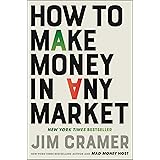Have you ever wondered what it takes to consistently pull significant profits from the volatile world of commodity markets? The video above offers a compelling glimpse into a successful Gold Futures trade, showcasing a disciplined approach that netted nearly $6,000 in profits. This isn’t just about making a single trade; it’s about understanding the nuances of market dynamics, employing robust risk management, and exhibiting the psychological fortitude required to navigate high-stakes environments.
The journey to such a profit, epitomized by the GC symbol, highlights critical principles that veteran traders swear by. It’s a masterclass in dynamic stop-loss management and strategic profit-taking, even when personal commitments like a meeting beckon. This scenario, involving the world’s most enduring safe-haven asset, provides a fertile ground for dissecting sophisticated trading methodologies that can be applied across various futures contracts.
Navigating the Gold Futures Market: A Primer for the Savvy Trader
Gold futures contracts, identified by symbols like GC on exchanges such as the COMEX, represent a standardized agreement to buy or sell a specific quantity of gold at a predetermined price on a future date. These instruments are highly liquid and offer significant leverage, making them attractive to traders seeking to capitalize on price fluctuations without owning the physical metal. However, this leverage also amplifies risk, underscoring the necessity of meticulous planning and execution.
A typical GC futures contract represents 100 troy ounces of gold, and its price movements are measured in “ticks,” often $10 per contract per 0.10 point move. Understanding these contract specifications is fundamental before diving into the market. Traders often look to gold as an inflation hedge, a store of value during economic uncertainty, or simply a speculative vehicle driven by global macro events and central bank policies.
Mastering Dynamic Risk Management: The Evolving Stop Loss
One of the most profound takeaways from the featured trade is the disciplined application of dynamic stop-loss management. The trader’s comment, “inching my stop up as candles print per usual,” illustrates a sophisticated approach to protecting capital and locking in gains. Unlike a static stop-loss order placed at the initial entry, a dynamic or trailing stop adjusts as the market moves favorably, effectively securing an ever-increasing portion of potential profit.
This method is akin to a mountaineer, who, having ascended a difficult section, secures their rope at a higher anchor point before proceeding further. Should an unexpected slip occur, the fall is limited to the distance from the last secure anchor. In trading terms, as price action confirms the bullish momentum, the stop-loss order is progressively tightened, typically just below recent swing lows or key support levels identified by candlestick patterns. This proactive adjustment minimizes potential reversals from eroding accumulated profits, allowing a trade to breathe while remaining protected.
Unlocking Momentum: High of Day (HOD) Breaks and “Runners”
The mention of “HOD break” and targeting “runners” points to a strong grasp of technical analysis and momentum trading. The High of Day (HOD) is a crucial psychological and technical level, representing the highest price reached during the current trading session. A decisive break above the HOD often signals renewed bullish conviction, attracting fresh buying interest and potentially initiating a significant upward move.
Traders who identify such breakouts might deploy strategies for “runners” – retaining a smaller portion of their position after scaling out most of their profits, allowing this “runner” piece to capitalize on extended moves. This strategy functions much like a seasoned hunter who, after securing enough game for the immediate needs, releases a smaller, faster hound to pursue a larger, more elusive quarry. It’s a balance between securing known gains and participating in potentially larger, albeit less certain, future gains, requiring astute management of the remaining position and its trailing stop.
The Art of Decisive Profit Taking: Securing Your Gains
While riding a profitable trade for as long as possible is a common aspiration, the transcript underscores the paramount importance of timely profit-taking. The trader’s decision to “hit close” because “it’s Thursday and I crushed it on gold twice, don’t want to miss any profits while I’m in the meeting,” is a textbook example of disciplined execution. This isn’t a sign of weakness but rather an acknowledgment of market realities and personal commitments.
The market is an unforgiving arena; paper profits can evaporate rapidly, especially in a leveraged environment like futures. Knowing when to step away from the screen and convert unrealized gains into tangible cash demonstrates maturity and strategic foresight. It’s akin to a chef perfectly timing the removal of a delicate soufflé from the oven; waiting too long can ruin the entire effort. Securing profits, especially on a profitable day or week, protects a trader’s capital and psychological well-being, preventing the common pitfall of letting greed supersede sound judgment.
The Unseen Edge: Community Support and Trading Psychology
Beyond the technical aspects, the Discord chat excerpts provide a valuable insight into the role of a supportive trading community. Exchanges like “just keep talkin to it… you’d make a great hostage crisis mediator” inject levity and camaraderie into an otherwise solitary pursuit. This interaction provides emotional support, validates observations, and fosters a sense of shared experience, which can be invaluable during periods of market stress or uncertainty.
Furthermore, the trader’s casual remark “still in, still bored” highlights the often-overlooked virtue of patience in trading. Many novice traders succumb to the urge to constantly be in a trade, leading to overtrading and suboptimal entries. True discipline often involves long periods of waiting for the ideal setup, much like a sniper patiently waiting for the perfect shot. This calm demeanor, combined with the clear intention to manage the trade before a meeting, underscores a professional approach that prioritizes risk management and realistic expectations over impulsive actions.











